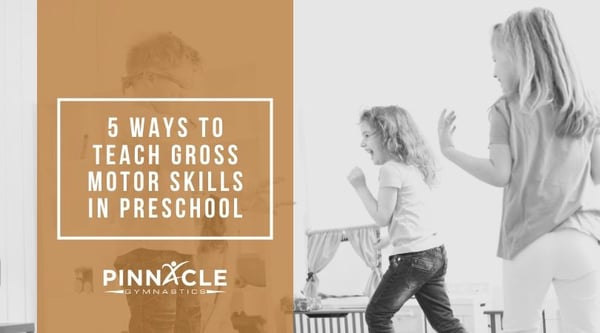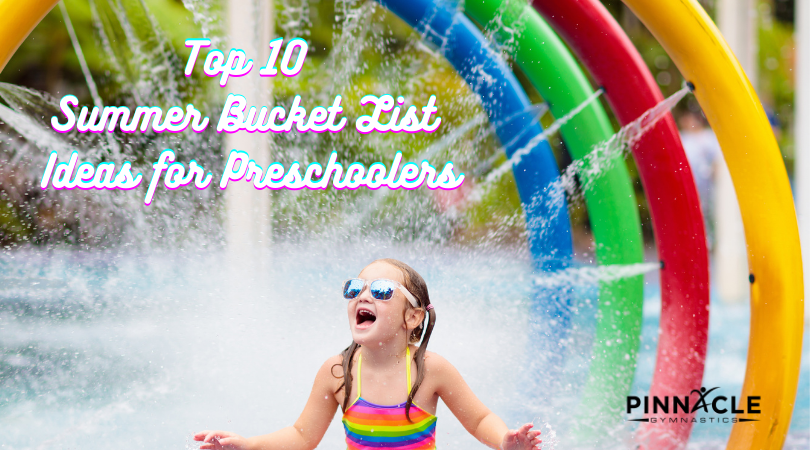As the requirements for our preschool children continue to grow and expectations continue to rise from both parents and administration, often things are pushed to the side. Sadly, there is a growing trend to stop teaching and developing gross motor skills in the preschool classroom. These skills, while different from your more traditional academic skills, are incredibly important for development and success later in life. Check out some of these easy ways to add gross motor development to your preschool classroom.
Why Gross Motor Skills are Important
Trust me, I understand that it can be incredible difficult to make sure to touch on everything you would like to in a day. Often, teacher are forced to decide and prioritize with their students. Gross motor skills can often be brushed aside to recess time, or other actions throughout the day. However, when properly taught, gross motor development can effect everything from reading to attention spans within your classroom.
 Gross motor skills are any large movement that engages core strength and uses multiple parts of the body. These skills include throwing, catching, running, and so much more. These skills will help your child with every day functions, from getting dressed to climbing into the car, as well as the ability to stand in a line, sit at a table, and run with their classmates. Children who lack strong gross motor skills often struggle with the day to day in a classroom, getting around the building, and even sitting at a table. Developing these skills during the child's preschool years allows for children to enter elementary school with these skills and allow them to function and learn in a typical classroom setting.
Gross motor skills are any large movement that engages core strength and uses multiple parts of the body. These skills include throwing, catching, running, and so much more. These skills will help your child with every day functions, from getting dressed to climbing into the car, as well as the ability to stand in a line, sit at a table, and run with their classmates. Children who lack strong gross motor skills often struggle with the day to day in a classroom, getting around the building, and even sitting at a table. Developing these skills during the child's preschool years allows for children to enter elementary school with these skills and allow them to function and learn in a typical classroom setting.
How to Develop Gross Motor Skills in Your Preschool Classroom
While the task may seem daunting to add these skills to your lesson plans, it can actually be quite simple. Often, these skills can be taught in quick, five minute lessons, or can even be used as a break time from other activities. Check out these five simple ways to add gross motor development:
- Walk on a line: While you are walking to any part of the building, or even across the classroom, have children walk on a line. By requiring children to place one foot in front of the other, instead of your typical side to side, you are engaging both sides of the children's brain and working on core strength and balance. You are also requiring the child to think and engage in the walking process, which slows them down and forces them to focus.
- Superman Circle: This one may seem a bit silly, but give your children a chance to have a superman circle time! When you are reading a book, have children lie on their stomachs and try to lift their legs and arms off the ground while they listen. By doing this, you are engaging their core muscles and requiring children to use coordination to engage all four limbs at the same time. Bonus, it will even help keep them focused as their bodies are engaged in an activity while listening.
- Hopscotch: This old time classic is still one of the best ways to engage your children! You can set up a hopscotch course outside with sidewalk chalk, or even inside with some painters tape on the floor. Add some numbers and you have a full activity! Children can start by using two feet to jump from box to box, and can build up to the traditional one foot, two foot hopscotch. This activity build strength and balance as they move across and is a great chance to work on number recognition as well.
- Dance Party: Hopefully this is something you already do in your classroom! Dance parties are a great way to move and release that built up energy in your preschool students. Take it one step further and do some basic, guided moves. Have children dance on one foot, swing their arms, or any combination you choose. By giving your children moves to follow, you are requiring them to engage their limbs in the correct way. This builds the connections between movement and your children's brains, helping build coordination.
- Catch: This one is simple but so important. Allowing the children in your classroom to catch a ball, scarf, or another item allows them to build their hand/ eye coordination and continue to work on balance and strength. Starting with something soft, see if your children can toss and catch to themselves. As this skill progresses, you can add a partner. This is also something that is easy to develop within your lesson plans. Have children count how many times they can catch it, or have them toss and catch when you say certain words in a book or song.

Gross motor, while incredibly important, is a easy item to add to your preschool lesson plans each day! By adding these activities, and so many more, you are giving your students skills that will follow them throughout their lives and allow them to become the best people they can become! Along with these benefits, gross motor games and skills are often fun and can help bring the play and excitement back into your classroom!




